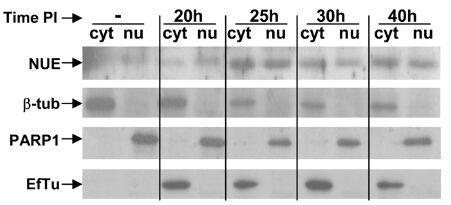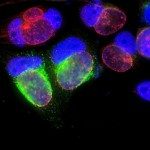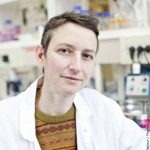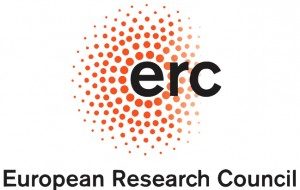Présentation
One of our important discoveries was the identification of a bacterial protein translocated into the host nucleus upon infection (Pennini et al, 2010). This protein, which we called NUE (NUclear Effector), shows histone methyl transferase activity. We are currently investigating at which site and to which extent NUE’s activity modifies the chromatin during infection, and the consequences for the host gene expression. We have also undertaken the identification of other chlamydial nuclear effectors and their functional study. Along this line, the recent discovery of methods to stably transform chlamydiae opened novel strategies of research and we recently obtained our first stably transformed cell line expressing epitope-tagged NUE. We are currently developing plasmids to perform random and targeted mutagenesis in C. trachomatis.

Detection of the chlamydial protein NUE in nuclear fraction (nu) over the course of infection. PARP1 is a nuclear protein and β-tubulin a cytosolic (cyt) protein. In contrast to NUE, the bacterial protein Ef-TU remains associated to the cytosolic fraction (from Pennini et al 2010).



